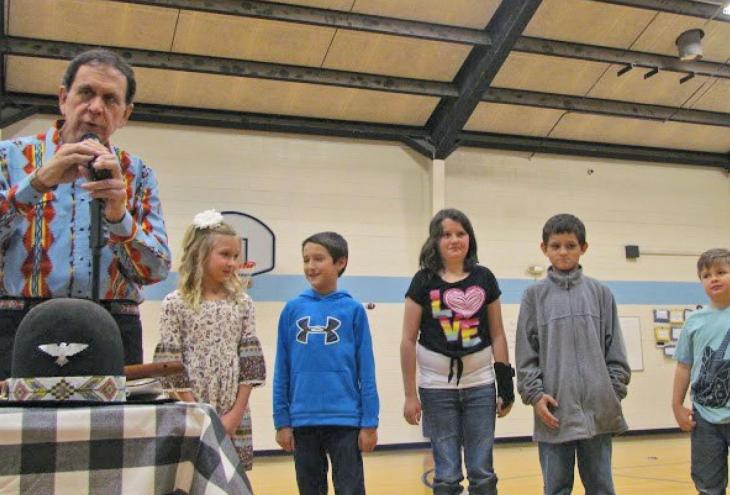Think back. Who motivated you to follow a STEM path? Chances are it was someone who made science both real and fun. This is something AISES members can do, and I encourage you to inspire the future by visiting a local school. This voluntary personal initiative aims to promote science through interaction and perhaps a simple activity — seeing science in action makes young minds want to learn more!
Activities could include talking about how science is relevant to real-life career options, designing a new product, or illustrating basic principles with an easy experiment (check out YouTube for ideas). Judging science fairs is another way to be involved that you and the students would enjoy. Through these interactions, students get a taste of the excitement scientists and engineers experience.
AISES volunteers are especially welcomed at schools that cannot afford much science enrichment. It’s particularly important that all students, including those in rural areas and on reservations, have access to exciting, hands-on STEM learning experiences that get them thinking about science — and science careers — in ways they never imagined. I can attest that it’s a win-win also for the “science ambassadors,” who gain the satisfaction of igniting enthusiasm.
Many students have never met a scientist or engineer of any kind, so they don’t think of becoming one. It’s particularly important that young people interact with female scientists and engineers to dispel any lingering stereotypes about the potential for women to succeed in technical fields.
Children who get to see practicing professionals at different career stages, doing different types of science, see a science path as normal from a young age.
Personal AISES interactions can and do affect attainment: children are more motivated to work hard after meeting amazing professionals and see that science can be fun, interesting, and entertaining. They form relationships and start thinking, “I want to be like him or her!”
Demystifying science by interacting with secondary students, especially, helps them envision a technical career. Evidence shows there is also great value in early interactions. Children who get to see practicing professionals at different career stages, doing different types of science, see a science path as normal from a young age.
The main reason young people don’t pursue science and math is because they see these subjects as “too hard.” I always try to leave students with the idea that science is really about exploring our world and solving problems — it’s much bigger than memorizing facts or doing experiments. When students interact with real-world practicing professionals, they come away with a strong message that everyone has an equal chance to do science.
We want to show students how science is relevant to their lives, and to inspire more to consider STEM via an open discussion. Expect questions like “What kinds of pets does a scientist have?” “Do you play any sports?” “How did you decide where to go to college?” “What were your favorite classes?” “What exactly did you study?” You can point out that an interest in science can find a fit with practically any other field — science doesn’t have to be research in a lab.
I love making classroom visits because it’s a great opportunity to get the next generation excited about science. Of course, not everybody needs to be a scientist, but young people need to be aware of the value of science so they can decide whether a STEM career is a good fit for them. And because AISES volunteers come from a wide variety of educational backgrounds, we can cover many different STEM-related topics. Based upon personal visitations in schools, I highly recommend the experience of sharing our career backgrounds, education, and jobs to enhance the future of our people and the nation.
J.C. Elliott High Eagle AISES founding member J.C. Elliott High Eagle, Cherokee, spent a 40-year career at NASA, where he was instrumental in achieving the safe return of Apollo 13. He was also instrumental in the designation of November as National Native American Heritage Month.













